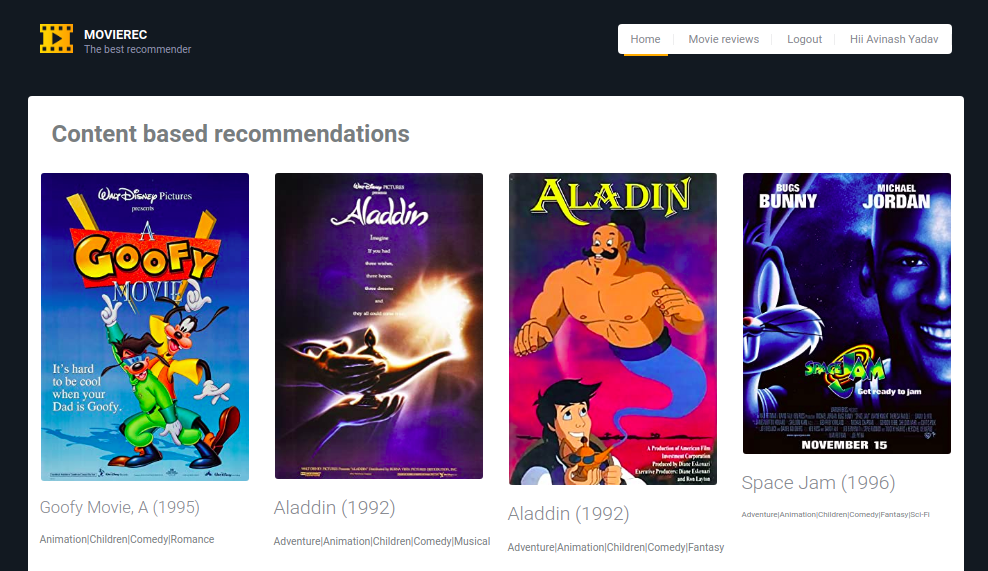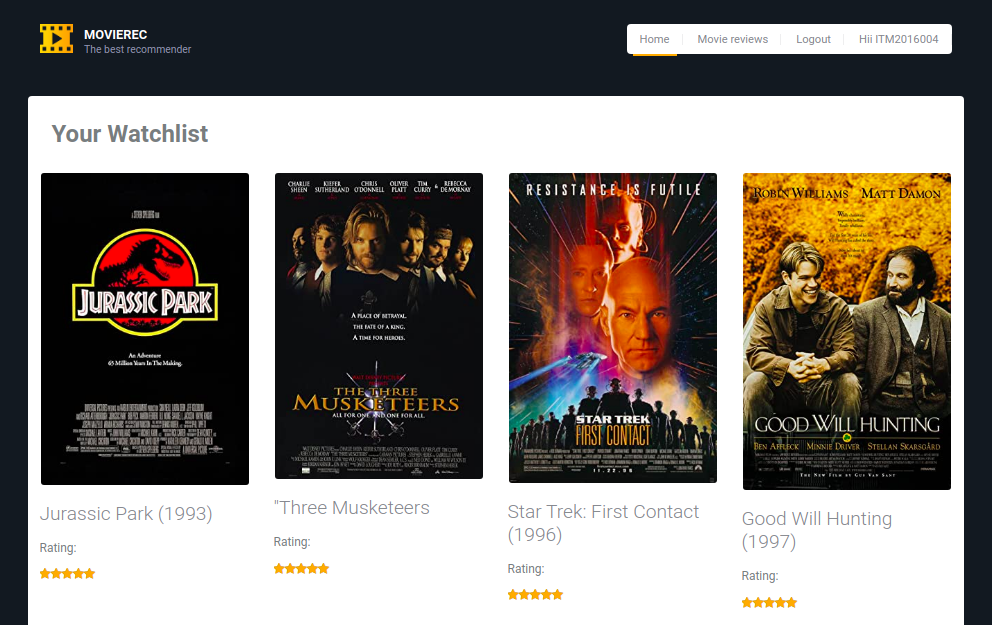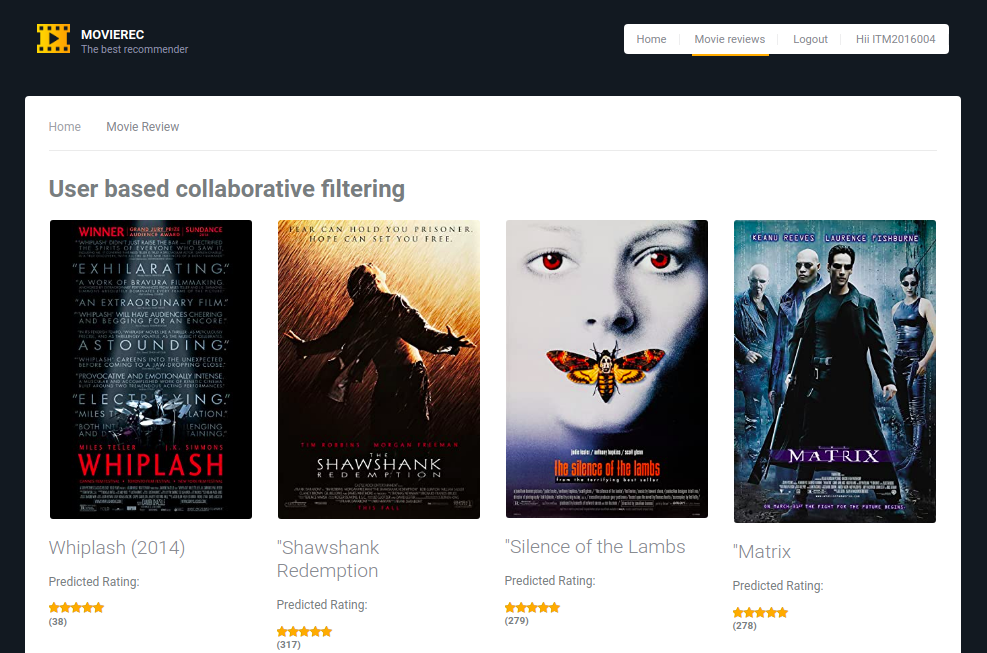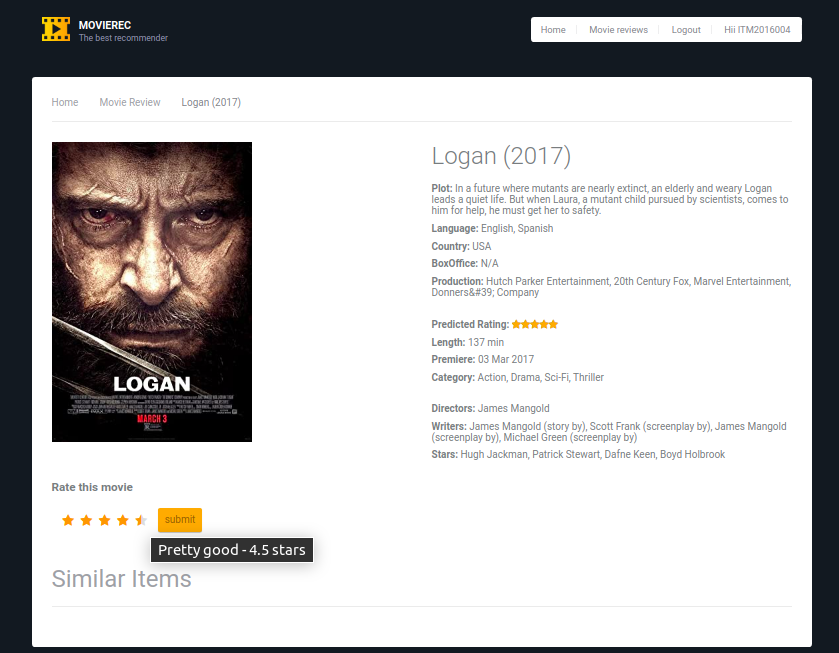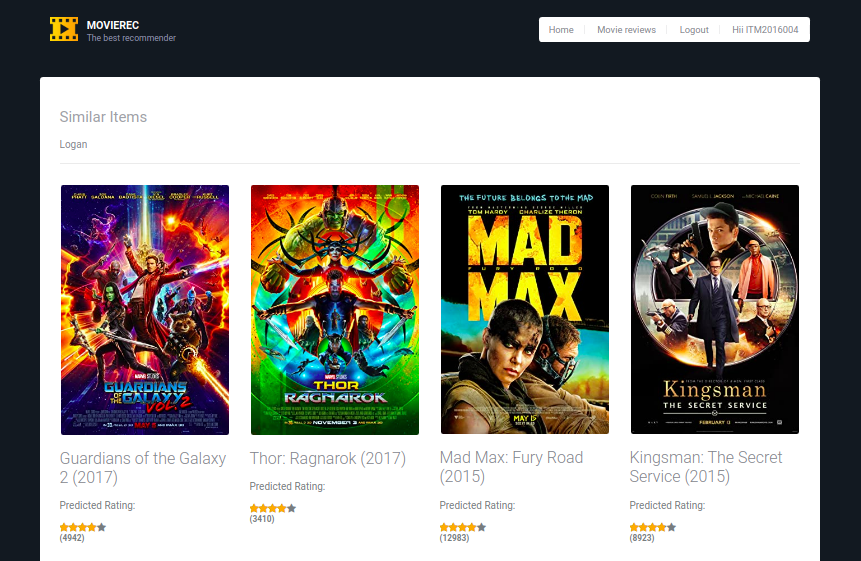This project is a web app for movie websites like Netflix where a user is allowed to create an account and watch movies. This web app has mainly focused on the quality of recommendations we make to the user. From the various forms of recommendations we have used some of the most appropriate ones. The user can view the already watched and rated movies in the dashboard. But before that when the user opens the web app he is prompted to login the website if not registered we can as well register. The web app has a nice GUI with every button and field labeled with their respective role. So, the user will not face any difficulty in using the web app.
This module is what I will see first after opening the web app. Here the user is asked to enter the username and password to be able to login and see the dashboard. If not registered, users can go to the registration page. Where it can fill the details and get registered after which certain questions will be asked for solving the “cold start” problem.
This module basically deals with already registered users where we display the rated movies by the user where users can change the ratings as well.
Then there is a top K recommended list module which shows the user recommended list of movies based on the user-based collaborative filtering method.
This module is responsible for showing any particular movie details with the predicted ratings. Then there is a separate section showing the similar movies based on the attributes and tags using item-item collaborative filtering. This module inherently gets called whenever the user clicks on the movie to see the details.
This Apache Spark tutorial will guide you step-by-step into how to use the MovieLens dataset to build a movie recommender using collaborative filtering with Spark's Alternating Least Saqures implementation. It is organised in two parts. The first one is about getting and parsing movies and ratings data into Spark RDDs. The second is about building and using the recommender and persisting it for later use in our on-line recommender system.
This tutorial can be used independently to build a movie recommender model based on the MovieLens dataset. Most of the code in the first part, about how to use ALS with the public MovieLens dataset, comes from my solution to one of the exercises proposed in the CS100.1x Introduction to Big Data with Apache Spark by Anthony D. Joseph on edX. Starting from there, I've added different techniques with modifications to use a larger dataset, then code about how to store and reload the model for later use, and finally a web service using Flask.
In any case, the use of this algorithm with this dataset is not new (you can Google about it), and this is because we put the emphasis on ending up with a usable model in an on-line environment, and how to use it in different situations. But I truly got inspired by solving the exercise proposed in that course, and I highly recommend you to take it. There you will learn not just ALS but many other Spark algorithms.
It is the second part of the tutorial the one that explains how to use Python/Flask for building a web-service on top of Spark models. By doing so, you will be able to develop a complete on-line movie recommendation service.
Part I: Building the recommender
Part II: Building and running the web service
Prerequisite for this project is to install JAVA in your linux system
sudo apt-get install openjdk-8-jdk-headless
You must have Python 3.6+ installed in your system. Since this is upgraded version of the project. You can prefer older version of this project here.
Download the latest version of Apache Spark form the official site. I'll recommend you to use the same version which I am using for painless journey.
wget -q https://downloads.apache.org/spark/spark-3.0.1/spark-3.0.1-bin-hadoop2.7.tgz
Clone this repository:
git clone https://github.com/Weirdolucifer/spark-movie-lens
If you don't have installed pip, use pip3 for installation
sudo apt-get install python3-pip
Set up a virtual environment and activate it to avoid dependency issues.
mkvirtualenv venv
workon venv
Install default-libmysqlclient-dev for flask-mysqldb:
sudo apt install default-libmysqlclient-dev
Install the required dependencies using the following command
pip3 install -r requirements.txt
MySql database setup: Here, I have removed the password from mysql login as root. You can set your own password. I created the database and table will be used for the application.
mysql -u root -p;
mysql> CREATE DATABASE flaskapp;
mysql> USE mysql;
mysql> UPDATE user SET plugin='mysql_native_password' WHERE User='root';
mysql> FLUSH PRIVILEGES;
mysql> USE flaskapp;
mysql> CREATE TABLE `users` (
`ID` int(20) NOT NULL,
`Password` char(60) DEFAULT NULL,
`Name` varchar(40) DEFAULT NULL,
`Genre1` varchar(40) DEFAULT NULL,
`Genre2` varchar(40) DEFAULT NULL,
PRIMARY KEY (`ID`)
) ENGINE=InnoDB DEFAULT CHARSET=latin1;
mysql> exit;
mysql -u root;
Download the dataset by running download_dataset.sh.
For the convenience I have replaced /datasets/ml-latest/ratings.csv by /datasets/ml-latest-small/ratings.csv to run locally.
- Make sure Folder
[spark-3.0.1-bin-hadoop2.7]in in home directory. - Go to the Network settigs: Find the IPv4 Address.
- Go to
home/<username>/spark-3.0.1-bin-hadoop2.7/confand make a copy ofspark-env.sh.templatefile and rename it tospark-env.sh - Add
SPARK_MASTER_PORT=5435,SPARK_MASTER_HOST=<Your IPv4 Address>inspark-env.shfile. - Go to the project folder and find
server.pyfile and update'server.socket_host': '<Your IPv4 Address>'. - The file
server/server.pystarts a CherryPy server running a Flaskapp.pyto start a RESTful web server wrapping a Spark-basedengine.pycontext. Through its API we can perform on-line movie recommendations.
- Update
start-server.shwith~/spark-3.0.1-bin-hadoop2.7/bin/spark-submit server.py - Run
./start-server.sh. You'll get the server link at the end of execution.
- Go to
home/<username>/spark-3.0.1-bin-hadoop2.7/confand runstart-master.shfile (master node). - After that you can initiate slave process in other systems having same structure by running
start-slave.sh <MASTER'S_IPv4_ADDRESS> - Then run
start-server.shin slave systems by updatigstart-server.shwith~/spark-3.0.1-bin-hadoop2.7/bin/spark-submit --master spark://<MASTER'S_IPv4_ADDRESS:5435> server.py
Please, refer the the second notebook for detailed instructions on how to run and use the service.
Contributions are welcome! Raise a PR 😉
The parent repository of this project contains the basic content, which was developed by Jose A. Dianes (2016). This project is extended with rich modules by Avinash Yadav and Ankit Kumar
The content developed by Avinash Yadav

